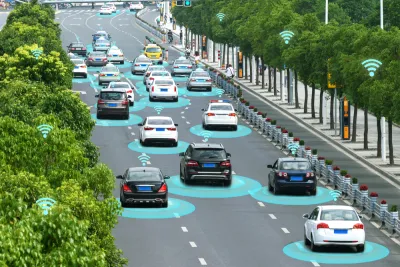Autonomous vehicle technology assumes that partial automation, where people are in control of vehicles at varying levels, is feasible. But research shows this is not how humans behave.

Bob O’Donnell writes about delays in the development of autonomous vehicle technology. One issue, he says, is that the current system of automation levels, which range from no automation at Level 0 to full automation at Level 5, do not adequately account for human nature.
This range assume that vehicles can be semiautonomous, as reflected in Levels 2-4, where people are always ready to take control. "But people don’t behave that way in the car. They either they pay attention, or they don’t," says O’Donnell.
He argues that a two-category distinction, assisted or autonomous, more accurately captures human behavior and would help with the long-term development of this technology.
"Full-throated advocates of full vehicle autonomy may decry any further delays to an autonomous driving world, but simplifying and focusing car technology developments into two simple categories is a safer and more realistic choice for the long term. Anything in between isn’t only impractical, it’s dangerous," says O’Donnell.
FULL STORY: How the race to autonomous cars got sidetracked by human nature

Analysis: Cybertruck Fatality Rate Far Exceeds That of Ford Pinto
The Tesla Cybertruck was recalled seven times last year.

National Parks Layoffs Will Cause Communities to Lose Billions
Thousands of essential park workers were laid off this week, just before the busy spring break season.

Retro-silient?: America’s First “Eco-burb,” The Woodlands Turns 50
A master-planned community north of Houston offers lessons on green infrastructure and resilient design, but falls short of its founder’s lofty affordability and walkability goals.

Test News Post 1
This is a summary

Analysis: Cybertruck Fatality Rate Far Exceeds That of Ford Pinto
The Tesla Cybertruck was recalled seven times last year.

Test News Headline 46
Test for the image on the front page.
Urban Design for Planners 1: Software Tools
This six-course series explores essential urban design concepts using open source software and equips planners with the tools they need to participate fully in the urban design process.
Planning for Universal Design
Learn the tools for implementing Universal Design in planning regulations.
EMC Planning Group, Inc.
Planetizen
Planetizen
Mpact (formerly Rail~Volution)
Great Falls Development Authority, Inc.
HUDs Office of Policy Development and Research
NYU Wagner Graduate School of Public Service




























